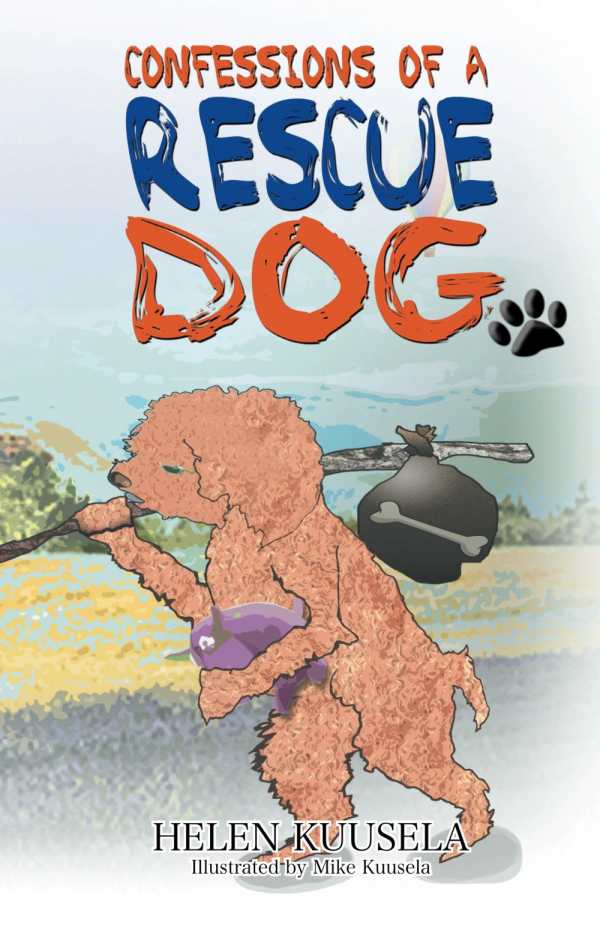Confessions of a Rescue Dog
A dog with a blog and a wry sense of humor teaches a lesson about humane treatment of animals.
Helen Kuusela writes from her toy poodle’s point of view in her short first novel, Confessions of a Rescue Dog. She gives the dog human characteristics, and he relates both the real and imagined events in his life.
The narrative begins with the puppy’s impressions just after he is born and during early life with his canine mother and siblings. At the age of ten weeks, his breeder sells him to a woman who gives him to her daughter as a surprise birthday gift. The daughter feeds him cake and candy but often ignores him, completely losing interest in her pet as she gets older. Just before his fourth birthday, he is taken to an animal shelter. Despite the friendly helpers who care for him there, he feels alone and abandoned.
The dog hopes the new woman who adopts him from the shelter will treat him better. She gives him a different name, Bumble, which he likes, but he is “not himself” because of his past traumas. When the woman rustles the morning newspaper as she turns the pages, she notices his frightened reaction. The author uses this scene to show how mistreated animals become conditioned to expect abuse from all humans. His new “mom” understands his behavior, saying, “Bumble, are you afraid of newspapers? Were you hit using them?”
Kuusela gives Bumble human traits with mixed results. However, she shows deep affection for the dog and gives him a wry sense of humor. When another dog named Amelia comes for a visit, she impresses everyone with her ability to roll over when she wants a treat. Bumble thinks maybe he should learn that trick too, but then concludes it would be “plagiarism” and leaves the rolling to Amelia.
Bumble uses the television remote control to select the programs he likes to watch, gets milk from the refrigerator and ice cream from the freezer to make milk shakes, and writes a blog and, supposedly, this book. However, his more doglike traits, such as barking to scare away intruders and becoming a therapy dog, reveal his character far more satisfactorily. The human characters react to Bumble’s behavior, yet are not fully developed.
Through Bumble’s narrative, Kuusela satisfactorily shows the typical canine qualities of loyalty and eagerness to please human companions. Illustrations by Mike Kuusela depict Bumble’s activities. Some errors were found, including confusion about when to capitalize mom and dad and use of “representable” instead of presentable.
Those who treat their pets as children and advocate for humane treatment of animals will appreciate this book.
Reviewed by
Margaret Cullison
Disclosure: This article is not an endorsement, but a review. The publisher of this book provided free copies of the book and paid a small fee to have their book reviewed by a professional reviewer. Foreword Reviews and Clarion Reviews make no guarantee that the publisher will receive a positive review. Foreword Magazine, Inc. is disclosing this in accordance with the Federal Trade Commission’s 16 CFR, Part 255.

